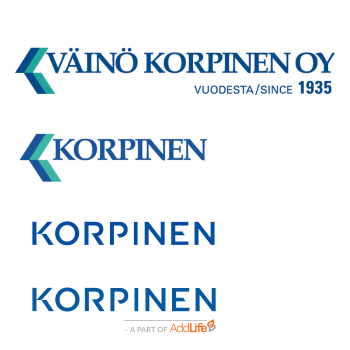Over 30 Years of Accessibility – The Story of Väinö Korpinen Oy
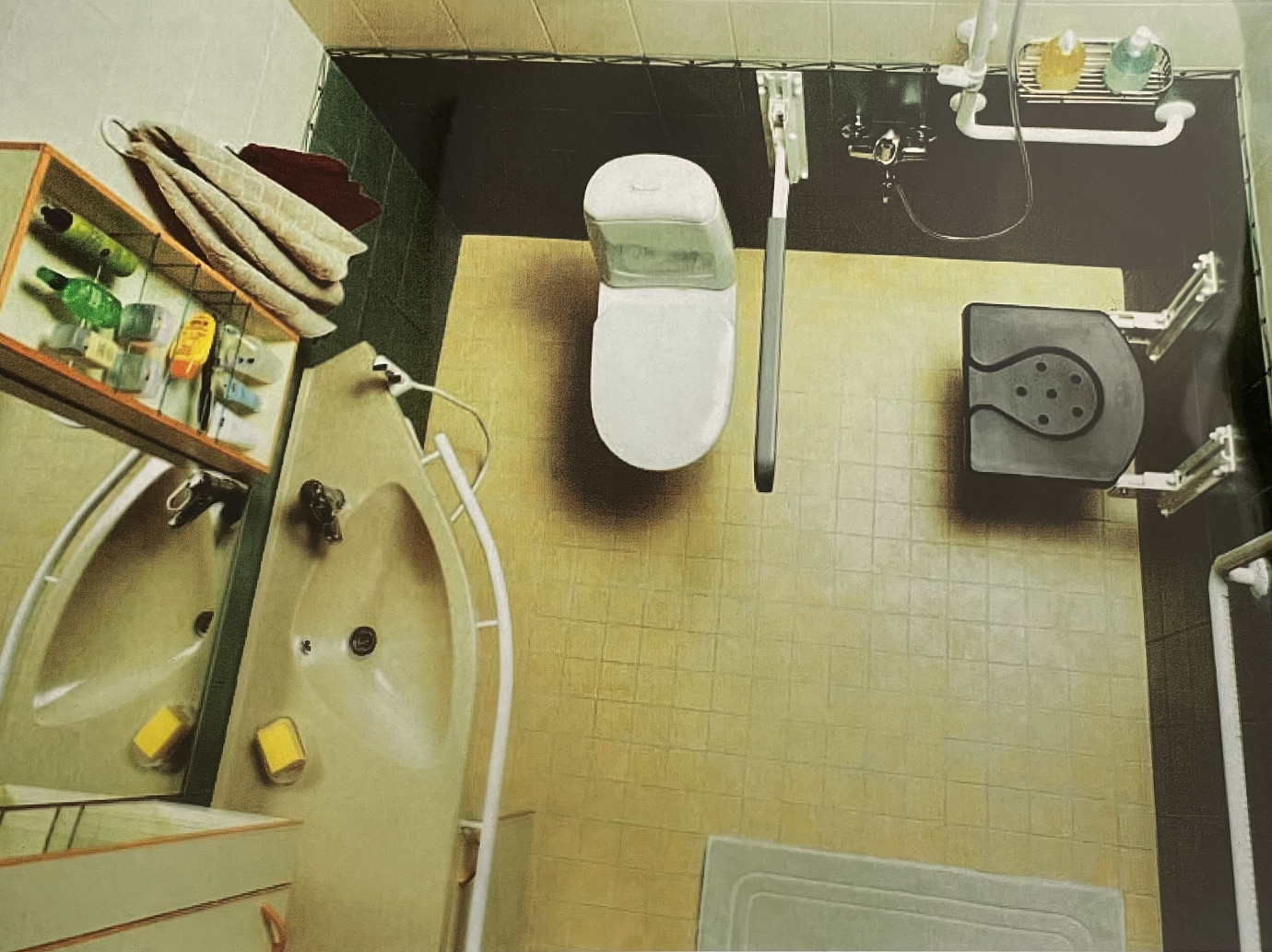
The development of business based on customer desires and needs has been the cornerstone of Korpinen's operations for decades. Korpinen serves as a strong influencer and a significant developer of accessibility in society.
1935–: From Paper Store to Accessible Bathrooms
The story of Väinö Korpinen Oy began in 1935, when Väinö Korpinen, after whom the company is named, established an office supply store on Lönnrotinkatu Street in the center of Helsinki. The company has been adaptable since its inception, and its first turning point in business occurred in the 1950s. Responding to a customer's expressed need, hygienic soap dispensers were discovered for the workers' shower facilities at the Helsinki shipyard. Korpinen even manufactured a heavily soiled hand cleanser for industrial use called "Puts-väck" by grinding sawdust, soap, and sand.
In 1991, the transition towards the current business began with the design of the first accessible bathroom support rails. From the beginning, the focus on product quality, excellent load-bearing capacity, and design has been Korpinen's priority.
The evolution of Korpinen's logos up to the present day.
1994-1997: Architects' Insights as a Starting Point for Functional Bathroom Design
In the mid-1990s, a shift towards user-oriented bathroom design took place.
In the Puotila nursing home maintained by the Gaius Foundation (now Puotila Service House) in East Helsinki, a renovation and expansion project had begun. Architects Liisa and Markku Sievänen, chosen for the project, aimed to find ways to promote independent and dignified living for elderly and mobility-impaired residents in a group home setting.
"The lack of planning of WC-bathroom spaces at service houses was striking"
Architect Kirsti Pesola, working as a project manager at the Elderly Care Association, traveled around Finland collecting information about the quality of service housing. Funded by the Finnish Slot Machine Association, the project aimed to develop design guidelines for group homes for physically frail elderly people. "During the travels I noticed that the lack of planning of WC-bathroom spaces was striking," Pesola recalls.
Regarding accessible toilet facilities, there had been guidelines in Finland's building code since the late 1970s, but they applied to public restrooms. "Since there were no specific WC design guidelines, very often these elderly WC facilities were created following the same guidelines, even though public restrooms and home WCs are two completely different things," Pesola emphasizes. "Of course, building codes have always allowed for one-sided WC spaces, but for a long time, a single spacious WC was the primary option."
The Gaius Foundation's Puotila project was selected as one of the sites for the second phase of Pesola's group home project, bringing the Sievänens and Pesola together. Both parties shared the goal of developing a functional, self-supporting, ergonomically assisted bathroom solution with minimal square footage. The decision was made to create innovative bathrooms, requiring the design of missing products for the market.
1997–1999 Korpinen Joins the Development Work
All parties involved in the Puotila project were committed to creating truly functional bathrooms for the future 160 rooms in Puotila. Korpinen's support rails and an architect-designed, narrowing sink with a fixed front rail formed the technical basis for these rooms.
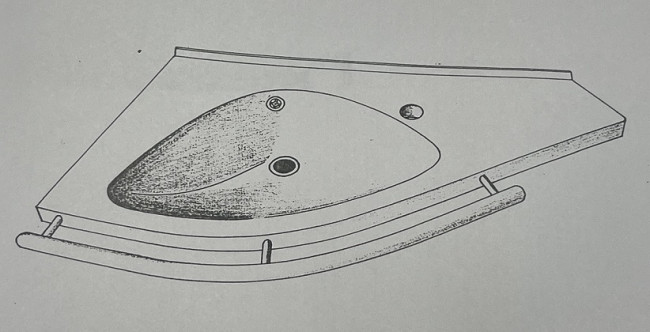
A cabinet with built-in electrical outlets and railings was also designed for the sink. One-sided furniture placement and the sink's design enabled more effective use of assistive devices, improving both independence and assistance.
A wooden model bathroom was built in one resident's room at the Puotila nursing home, where the plan was fine-tuned in close collaboration with residents and nursing staff. The bathroom was tested and commented on by experts from various fields.
Väinö Korpinen Oy was invited to visit the model bathroom and became actively involved in the development work. The concept was further developed in collaboration with Korpinen, resulting in the completion of new Gaius sinks and cabinets, bringing the accessible bathroom project to a successful conclusion in 1999.
"Already in October 1998, we realized that the Gaius concept is so good that it suits other projects as well," says Liisa Sievänen.
Through its active participation in development work, Korpinen earned the right to market the developed bathroom concept for Puotila. The Gaius bathroom concept, based on the Gaius Foundation's name, was born.
2000–2005: "Puotila Model" Becomes a Recommended Bathroom Solution for Care Facilities and Korpinen's Export Begins
Between 1999 and 2005, rooms based on the Gaius Foundation's and the Sievänens' developed concept were built in Finland with special permits. By 2005, the Finnish building regulations had been influenced, and the Gaius bathroom became a recommended bathroom solution for care facilities.
In 2000, the export of Gaius products began, first to Japan and a year later to Norway. Korpinen's export manager, along with Kirsti Pesola, toured Norway, presenting user-oriented design and the development of the Gaius concept to Norwegian architects.
In 2004, the Finnish Ergonomics Society awarded Korpinen an ergonomic award for significant work in developing accessible bathroom solutions and furniture.
Customer-Centric Approach Remains at the Core of Korpinen's Actions
The twists and turns in Korpinen's history have given rise to a customer-centric development culture within the company. The value of collaboration was learned in the 1990s while developing bathroom concepts alongside designers and the Gaius Foundation. Korpinen continues on this same path to this day.
The insights gained from user-centered development are integrated into Korpinen's daily life and manifest in close collaborations with builders, designers, and various user groups. The aim is to develop better bathrooms for care facilities, hospitals, and public spaces.
By engaging in and enabling dialogues among different groups, Korpinen is able to create holistic solutions and new products to meet the needs of today.
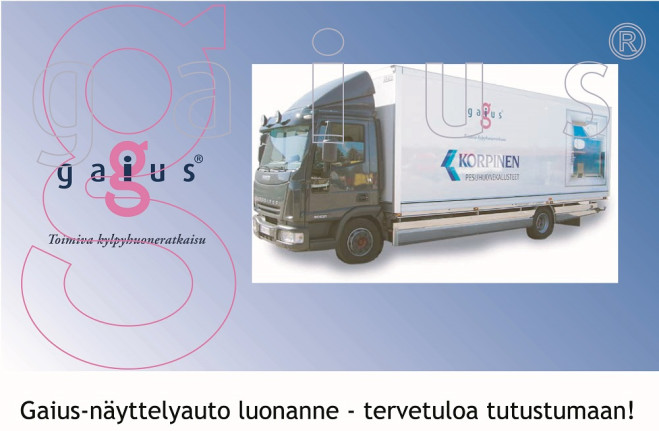
An old advertisement for the Gaius exhibition car. The exhibition car has been replaced but is still in use. You can explore Gaius bathroom concepts and an expanded range of aids by arranging to visit the exhibition car on-site. Learn more >
The Story Continues
The shortage of workforce in the care industry is a crisis that affects both Finland and internationally. This further emphasizes the need for bathroom spaces that embody the goals set in the 1990s—user independence and caregiver ergonomics.
Korpinen aims to contribute to the solution, with continuous product development and innovation being the company's strategic choices. An example of this is the antimicrobial feature introduced in 2015 to support infection control. Korpinen proudly continues the pioneering work started by Sievänen and Pesola.
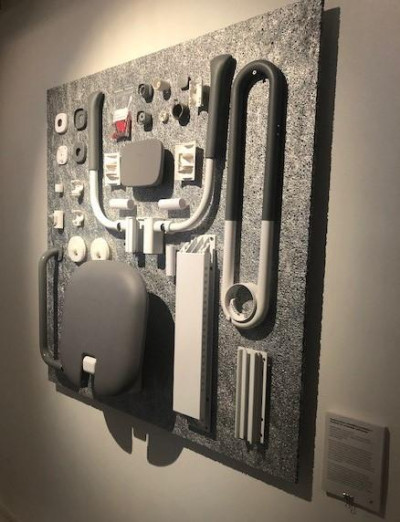
The design firm Aivan, responsible for the Gaius products shown in the image, was awarded the Kaj Franck Design Prize by Design Forum Finland. This award is one of the most significant design awards in Finland.
Expanded Product Range
Since 2018, Väinö Korpinen Oy has been a part of the Swedish AddLife group. Collaboration with the parent company and sister companies has further enhanced expertise and opened up new opportunities to operate not only in bathroom spaces but also in other areas.
Barrier-free kitchens, ceiling lifts, a wide range of aids, safety products, and installation services are now within Korpinen's realm of expertise. The ability to respond to customer desires in product and concept development propels Korpinen's story forward.
